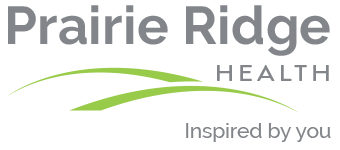Support and information provided through Breast Health Program
“The answers to these questions and more begin with this answer – there are several different types of breast cancer,” explained Butterbrodt. Some breast cancers are hormone driven and some are not. “The staging makes a big difference in your treatment plan, therefore it is critical to have yearly mammograms and catch breast cancer at the very earliest stages,” she said. “Cancer treatment plans are catered to each individual and the type of breast cancer they have. Family history only accounts for 5-10% of breast cancers.”
Those factors putting an individual at higher risk of breast cancer are:
-
Being a woman
-
Age
-
Personal history of breast cancer (2 to 3 times greater rate of a reoccurrence of breast cancer)
-
Radiation to chest or face before age 30
-
Lack of exercise
-
Being overweight
-
Smoking
-
Low levels of Vitamin D
-
Family history
-
Breast cancer can also occur in men, it is important that if you feel a lump to contact your physician.
“My primary role and focus is on the patient, as well as family and support members,” said Butterbrodt. “I serve as the central point of contact for each patient and all health care professionals who are involved in providing care, regardless of the setting.”
As the Breast Nurse Navigator, Butterbrodt meets with patients during the initial phases of screening and diagnosis. She provides knowledge in multiple treatment options, can identify ways to help with the financial impact that a cancer diagnosis brings, and will assist the patient and caregivers in coping with the strong emotional needs that can occur during this difficult journey.
“I make it a priority to learn the physical, psychological and social needs of my patients and their families, and offer intervention and referrals as needed,” she explained.
Breast cancer is the most common cancer among American women, except for skin cancers. About 1 in 8 (12%) women in the U.S. will develop invasive breast cancer during their lifetime.
The American Cancer Society's estimates for breast cancer in the United States for 2016 are:
- About 246,660 new cases of invasive breast cancer will be diagnosed in women.
- About 61,000 new cases of carcinoma in situ (CIS) will be diagnosed (CIS is non-invasive and is the earliest form of breast cancer).
- About 40,450 women will die from breast cancer.
According to the American Cancer Society, breast cancer is the second leading cause of cancer death in women. (Only lung cancer kills more women each year.) The chance that a woman will die from breast cancer is about 1 in 36 (about 3%).
Death rates from breast cancer have been dropping since about 1989, with larger decreases in women younger than 50. These decreases are believed to be the result of finding breast cancer earlier through screening and increased awareness, as well as better treatments.
Butterbrodt is committed to continuing her quest to empower patients to participate in their care and treatment, educate, improve the patient’s understanding of treatment plans, and ensure patients complete their treatment as prescribed. “My goal is to be a teacher, liaison, advocate and friend throughout the entire cancer journey,” she said.
Prairie Ridge Health’s Breast Health Program is complimentary for the patients of Prairie Ridge Health. For more information visit columbuscommunityhospital.org or call Butterbrodt at 920-623-6434.

